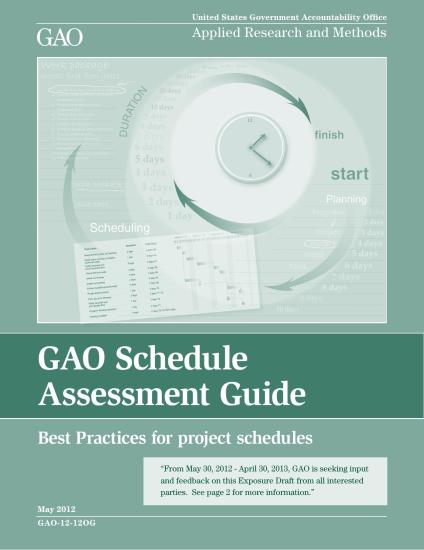Rating: Not rated
Tags: Project Management, Lang:en
Summary
GAO-12-120G
The U.S. Government Accountability Office is responsible
for, among other things, assisting the Congress in its
oversight of the federal government, including
agencies’ stewardship of public funds. To use public
funds effectively, the government must meet the demands of
today’s changing world by employing effective
management practices and processes, including the measurement
of government program performance. In addition, legislators,
government officials, and the public want to know whether
government programs are achieving their goals and what their
costs are.
Toward these objectives, In March 2009, we published the
GAO Cost Estimating and Assessment Guide as a consistent
methodology based on best practices that can be used across
the federal government to develop, manage, and evaluate
capital program cost estimates. The methodology outlined in
the Cost Estimating and Assessment Guide is a compilation of
best practices that federal cost estimating organizations and
industry use to develop and maintain reliable cost estimates
throughout the life of an acquisition program.
This schedule guide is a companion to the Cost Guide. A
consistent methodology for developing, managing, and
evaluating capital program cost estimates includes the
concept of scheduling the necessary work to a timeline, as
discussed in the Cost Guide. Simply put, schedule variances
are usually followed by cost variances. Because some program
costs such as labor, supervision, rented equipment, and
facilities cost more if the program takes longer, a reliable
schedule can contribute to an understanding of the cost
impact if the program does not finish on time. In addition,
management tends to respond to schedule delays by adding more
resources or authorizing overtime. Further, a schedule risk
analysis allows for program management to account for the
cost effects of schedule slippage when developing the
life-cycle cost estimate. A cost estimate cannot be
considered credible if it does not account for the cost
effects of schedule slippage.
